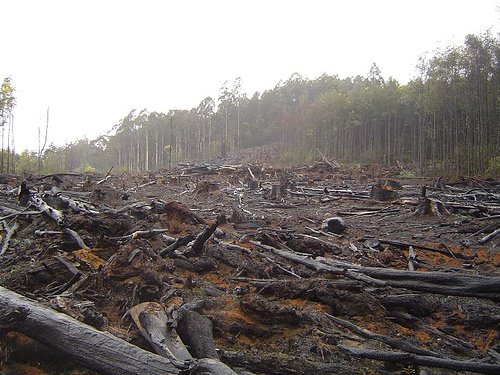By Peter Lehner and Nathan Rosenberg,*
With the realities of climate change becoming ever more visible, policymakers are seeking to enlist all sectors of the economy to be part of the solution. Federal and state officials are now looking at how agriculture can be transformed to help stabilize our climate. This attention is critical because our food system contributes far more to climate change than most people realize, and reducing agriculture’s contribution is critical to achieving our climate change goals.
Fortunately, due to the pioneering efforts of many farmers and ranchers, we know that we can in fact eliminate net agricultural emissions in the US by both significantly reducing greenhouse gas emissions and increasing carbon sequestration in plants and soils. However, these climate-friendly practices are employed on only a tiny fraction of US agricultural land; policy change is needed to accelerate their adoption. The good news is that there are many powerful policy levers that can help bring about change. The bad news is that because this area has received a little attention in the past, policymakers often have to work with little to no information. Our new book, Farming for Our Future: The Science, Law, and Policy of Climate-Neutral Agriculture, aims to fill this information gap and provides the first comprehensive overview of the law and policy of agricultural emissions in the United States. In addition to seeking to establish the most complete and accurate understanding of the science on agricultural emissions, we include hundreds of regulatory legal and policy recommendations designed to reduce net emissions.
Here are some highlights from the book:
We can completely eliminate net agricultural emissions
Even though climate-friendly farming (also often known as regenerative farming) has received little government support in the past, the data are clear: We can eliminate net agricultural emissions by both significantly reducing greenhouse gas emissions and increasing carbon sequestration in plants and soils. Farmers and ranchers can reduce greenhouse gas emissions through improved grazing and feeding practices and better manure, irrigation, crop and soil management. And all sectors of the economy can contribute by shifting procurement to less emissions-intensive foods.
At the same time, we can significantly increase the amount carbon stored on farms and ranches. Studies consistently find that perennial practices, together with aggressive emission reductions, are capable of sequestering enough carbon to eliminate net agricultural emissions. Other practices that promote diversification and soil health, , perennial or not, also have the capacity to lower net emissions. The benefits of cover crops, longer crop rotations, rotational grazing, and no-till practices, for example, have been widely demonstrated. (One caveat: these great soil and plant carbon sequestration opportunities should not be used to offset the fossil fuel emissions from other sectors; they are still too hard to measure, can be reversed, and are needed to balance out agricultural emissions that are not eliminated.) Even without including many emission reduction measures such as feed additives to reduce enteric methane or dry manure management, the widespread implementation of climate-friendly practices can achieve reductions equivalent to current annual direct emissions. We know what to do; the question is how to scale up fast. This book includes numerous recommendations for how to do so.

Agriculture’s significant contribution to climate change underscores the importance and impact of policy change to accelerate adoption of climate-friendly practices
Many people do not recognize the necessity to reduce emissions from agriculture as part of a climate strategy, nor do they fully grasp the upside potential of agriculture policy reform. This is because the most widely-used emissions figures comes from the Environmental Protection Agency greenhouse gas inventory, which estimates that agriculture is responsible for only about 10% of the country’s total GHG emissions. Yet changes to agricultural and food policies will have a far bigger impact than this figure suggests.
EPA’s inventory places many agricultural activities, such as on-farm energy usage, annual land use conversion, and the production of agricultural inputs, in other inventory sectors, but changes to agricultural practices will help reduce these emissions as well. Moreover, since agriculture occupies over one billion acres in the US and over 60% of the contiguous land mass, policy changes that create incentives or mandates that allow more land to sequester more carbon as it did prior to land conversion are both urgently needed and can have a big impact.
In addition, using a method for calculating the impact of methane over 20 years — consistent with the need for short-term action and current near-term policy discussions instead of the 100-year impact as in EPA’s inventory, more than doubles the impact of agriculture’s emissions – and also doubles the impact of reductions. (Recent research also indicates that EPA’s models are often overly conservative when compared to actual measurements.) Accounting for all these adjustments to the standard brings the total GHG emissions attributable to the agricultural sector to about one-third of all U.S. emissions. A better understanding of the significance of agriculture GHG emissions makes clear that the country cannot reach its climate goals unless we address the agriculture sector and demonstrates the tremendous potential impact of food policy reform.

Policy opportunities abound
While reform of any sort is politically difficult, our agriculture sector has several characteristics that make change more plausible. First, there are a relatively small number of large-scale operations (primarily industrial-scale livestock and poultry operations and their suppliers) that produce an immense share of the sector’s emissions. Moreover, a close analysis of the people listed as farmers shows that about half are really retirees, hobbyists, and the like who often sell little to no product and whose operations generate very few emissions. Thus, reforming the operations of a fairly small number of larger facilities can have a huge climate change impact.
Second, federal policy already largely decides how we grow our food. Tens of billions of dollars of annual subsidies, numerous research and extension bodies, environmental regulations (often regulatory carve-outs), tax expenditures, trade programs, and more—all of these shape American agriculture. These programs can be quickly reformed by the current and future administrations to accelerate climate-friendly farming. In addition, governments at all levels can use their enormous procurement power to support the production of food with low-to-no net emissions. The upcoming 2023 reauthorization of the Farm Bill also offers Congress many opportunities to expand and better target agricultural research and conservation funding, revise crop insurance and commodity programs to favor crops and practices that reduce net emissions, and use other federal spending powers to help achieve climate-neutral agriculture. Lawmakers have introduced numerous other bills to address various aspects of needed reform. And the U.S. Department of Agriculture and Environmental Protection Agency have myriad regulatory and other programs that can be refashioned to help convert agriculture from a climate problem to a climate solution.
Whether we will be able to completely eliminate net agricultural emissions is not a scientific question, but a political one. Our book is designed to help answer that question and inspire the change we need to do so.
Tiffany is the Communications Associate at the Sabin Center for Climate Change Law.


